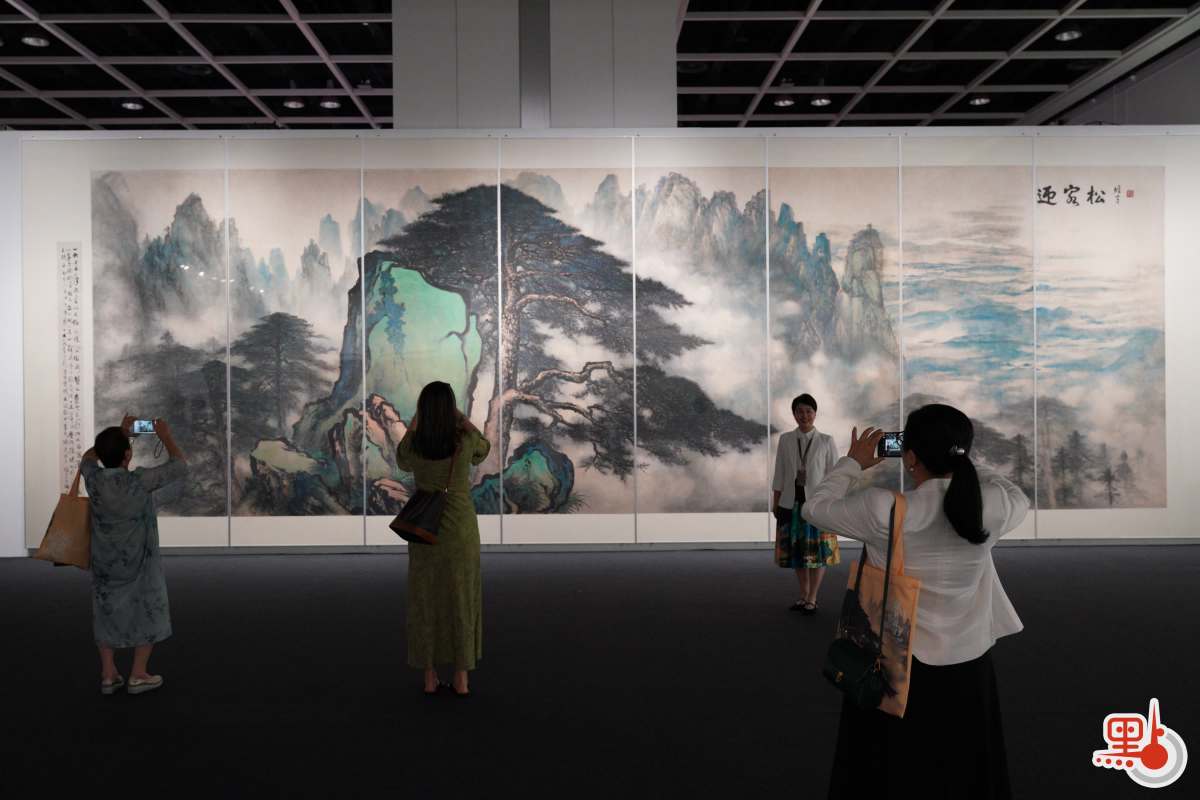
The Reform Mission: Guangdong Art Centennial Exhibition Hong Kong is currently being held at the Hong Kong Convention and Exhibition Centre, running from now until June 2. The exhibition features 160 works from different periods of the Lingnan School of Painting, tracing the century-long development of Lingnan art.
The Lingnan School of Chinese Painting, alongside Cantonese opera and Guangdong music, is known as one of the "Three Treasures of Lingnan Culture." In 20th-century Chinese painting, the Lingnan School stood alongside the Beijing-Tianjin School and the Shanghai School as a representative of Modern Chinese Painting. It is also regarded as the revolutionary faction within traditional Chinese painting.
Founded in the early 20th century by Gao Jianfu, Gao Qifeng, and Chen Shuren, it embraced the core philosophy of "blending Chinese and Western techniques, integrating ancient and modern styles," forming a unique artistic style and technical system.
The characteristics of the Lingnan School are mainly reflected in four aspects:
1. Fusion of Chinese and Western Techniques
Breaking free from the constraints of traditional Chinese painting, the school incorporated Western watercolor rendering techniques and Impressionist light-and-shadow effects while retaining the brush-and-ink charm of Chinese painting.
For example, backgrounds were often rendered with color to create atmosphere, combined with Western perspective and anatomical principles, giving the works both realism and three-dimensionality.
During their studies in Japan, Gao Jianfu and others borrowed the "hazy-body" technique from Japanese painting, blending ink and color to create a unique "splashed-water-and-powder" effect, enhancing the layering and interplay of light and shadow.

2. Innovative Use of Color and Ink
The school boldly employed vibrant colors, emphasizing "applying color according to category" to heighten visual impact. For instance, Zhao Shao'ang's bird-and-flower paintings are renowned for their vivid hues, preserving the spirit of ink wash while incorporating Western color-block contrasts, creating a style that appealed to both refined and popular tastes.
3. Sketching Tradition and Expansion of Themes
The Lingnan School advocated "learning from nature, drawing inspiration from the heart," deriving creativity from the natural world and rejecting blind imitation of antiquity.
Second-generation painters such as Guan Shanyue and Li Xiongcai traveled extensively to sketch, introducing new subjects like snow-capped mountains and grasslands into Chinese painting, breaking the thematic limitations of traditional landscapes. Contemporary artists like Li Jinkun further combined sketching with modern urban landscapes, reflecting the spirit of the times.

4. Diversity of Techniques and Personalized Expression
The Lingnan School avoided rigid formulas, emphasizing "bold strokes, careful refinement," and blending meticulous brushwork with freehand expression.
For example, Zhao Shao'ang excelled in capturing the essence of birds and flowers with concise strokes, while Li Xiongcai used delicate rendering to convey the grandeur of landscapes. This openness allowed for diverse styles within the school—Chen Shuren leaned toward literati painting's poeticism, while Gao Jianfu's works carried a more revolutionary intensity.
Woodcut Art in Guangdong During the Anti-Japanese War
During the war, Guangdong and Hong Kong became twin strongholds of anti-fascist cultural resistance. In a new woodcut movement promoted by Chinese writer Lu Xun, Cantonese printmakers infused their works with the boldness of Han Dynasty stone carvings and the simplicity of folk New Year paintings.

In June 1934, Li founded the Modern Woodcut Society at the Guangzhou Art School, a key group in China's woodcut movement. Their works resonated with the era, focusing on the suffering of the lower classes, resistance against Japanese invasion, and social critique. Li Hua's rough, powerful knife strokes depicted national anguish, embodying the Enlightenment spirit of "art for life's sake." Their techniques borrowed from German Expressionism's stark black-and-white contrasts and woodcut knife work, merging with traditional Chinese linear woodcut language to create a concise, vigorous visual style. Exaggerated, dynamic compositions conveyed emotional impact, breaking away from the decorative nature of traditional prints. This movement remains a vital source of China's realist printmaking tradition.
Ye Qianyu and Ding Cong's anti-Japanese cartoons in Hua Shang Daily were marked by sharp satire and vivid storytelling. Ye used simple lines and exaggerated forms to expose Japanese atrocities and traitorous behavior with humor, while Ding emphasized detailed depictions, employing strong black-and-white contrasts and dense compositions to highlight civilian suffering and resistance. Both blended Western cartoon techniques with Chinese folk art, using accessible visual language to stir patriotism, making their work a crucial cultural weapon during the war.
Relevant information:
Reform Mission: Guangdong Art Centennial Exhibition Hong Kong
Dates: May 22, 2025 | 14:00–19:30, May 23–June 2, 2025 | 9:30–19:30
Venue: Hong Kong Convention and Exhibition Centre
Related News:
Guangdong Art Centennial Exhibition | John Lee presents three expectations for art community




















Comment